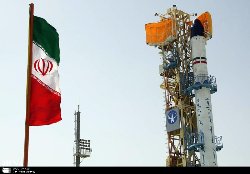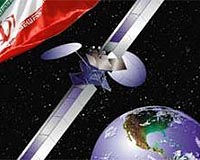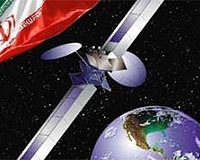Head of Iran’s Space Agency Hamid Fazeli said on Thursday that his organization plans to launch three other research satellites into space.
|
Head of Iran's Space Agency Hamid Fazeli
|
Head of Iran's Space Agency Hamid Fazeli said on Thursday that his organization plans to launch three other research satellites into space.
'Kavoshgar-V carrying animals, Fajr and Navid satellites will be launched into space after Rasad research satellite was launched into space on Wednesday,' he added.
Fazeli noted that Kavoshgar-V weighing 285 kilograms will be launched to below 120 kilometers orbit in August.
'Fajr satellite is designed by researchers of the Islamic Republic of Iran's Defense Ministry,' he further said.
Fazeli pointed out that the mission of Fajr festival is setting and improving the technologies used in next generation satellites.
Meanwhile, “Rasad” (Observation in English) Satellite has turned around the earth about 29 times since launching on Wednesday, said an official at Iran Aerospace Organization on Friday.
 Director General of the International and Public Relations Affairs Department at Iran’s Aerospace Organization, Mohammad-Mehdi Haji Ebarahimi said on Friday that while turning around the earth, the satellite has been over Iran sky eight to nine times, relaying information on the country to the earth.
Director General of the International and Public Relations Affairs Department at Iran’s Aerospace Organization, Mohammad-Mehdi Haji Ebarahimi said on Friday that while turning around the earth, the satellite has been over Iran sky eight to nine times, relaying information on the country to the earth.
Iran successfully sent its second domestically-made satellite named 'Rasad' into orbit on auspicious birth anniversary night of Imam Ali ibn Abu-Taleb (AS) on Wednesday thanks to efforts of Iran Aerospace Organization (IAO) technicians.
Iranian President Mahmoud Ahmadinejad had also earlier announced that the country plans to send a home-made measurement satellite into orbit in the near future.
'Iran's measurement satellite will be launched into space from an Iranian launch-pad and will have an Iranian exchange station and control station,' Iranian president said late 2010.
The president further noted Iran's plans for sending astronauts into space in 2024, and said that the issue had gone under a second study at a cabinet meeting and that the cabinet had decided to implement the plan in 2019, five years earlier than the date envisaged in the original plan.
|
OMID Satellite
|
“Omid” (hope in English) was Iran's first research satellite that was designed for gathering information and testing equipment. After orbiting for three months, Omid successfully completed its mission without any problem. It completed more than 700 orbits over seven weeks and reentered the Earth's atmosphere on April 25, 2009.
After launching Omid, Tehran unveiled three new satellites called Tolou, Mesbah II and Navid, respectively. Iran has also unveiled its latest achievements in designing and producing satellite carriers very recently.
A new generation of home-made satellites and a new satellite carrier called Simorgh (Phoenix) were among the latest achievements unveiled by Iran's aerospace industries.
The milk-bottle shaped rocket is equipped to carry a 60-kilogram (132-pound) satellite 500 kilometers (310 miles) into orbit.
The 27-meter (90 foot) tall multi-stage rocket weighs 85 tons and its liquid fuel propulsion system has a thrust of up to 143 tons.
Iran is one of the 24 founding members of the United Nations' Committee on the Peaceful Uses of Outer Space (UNCOPUOS), which was set up in 1959.


